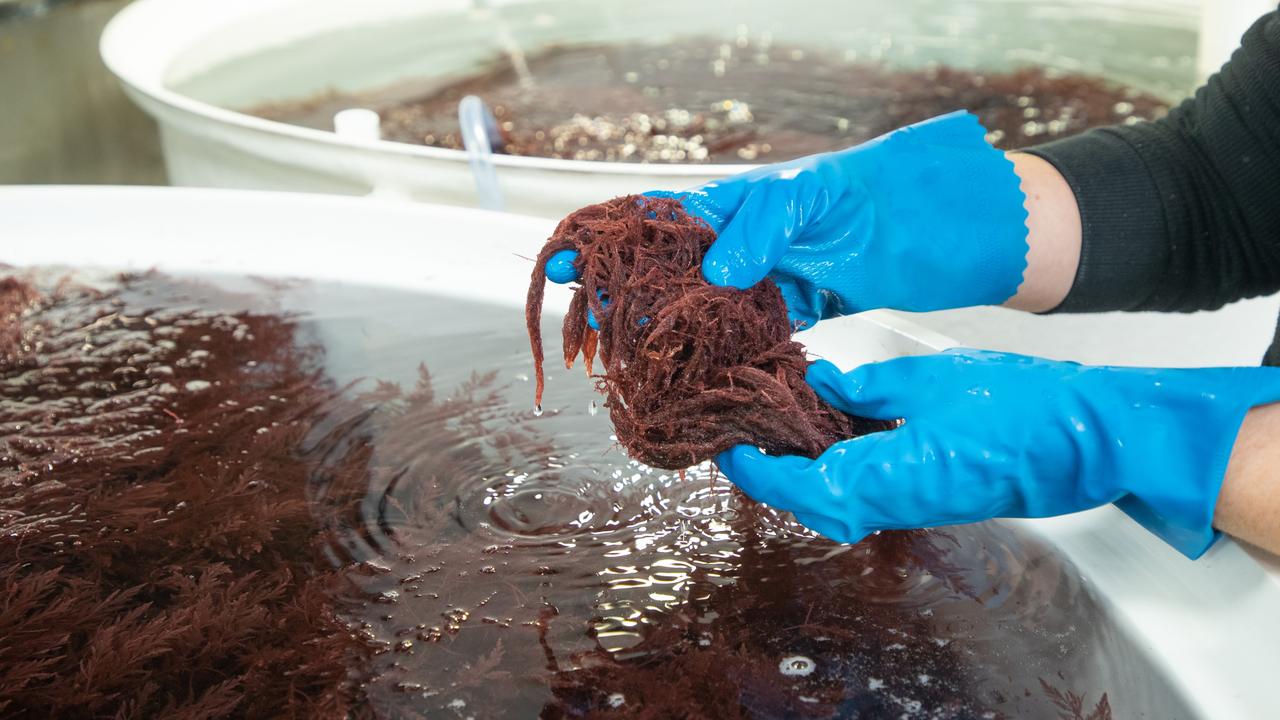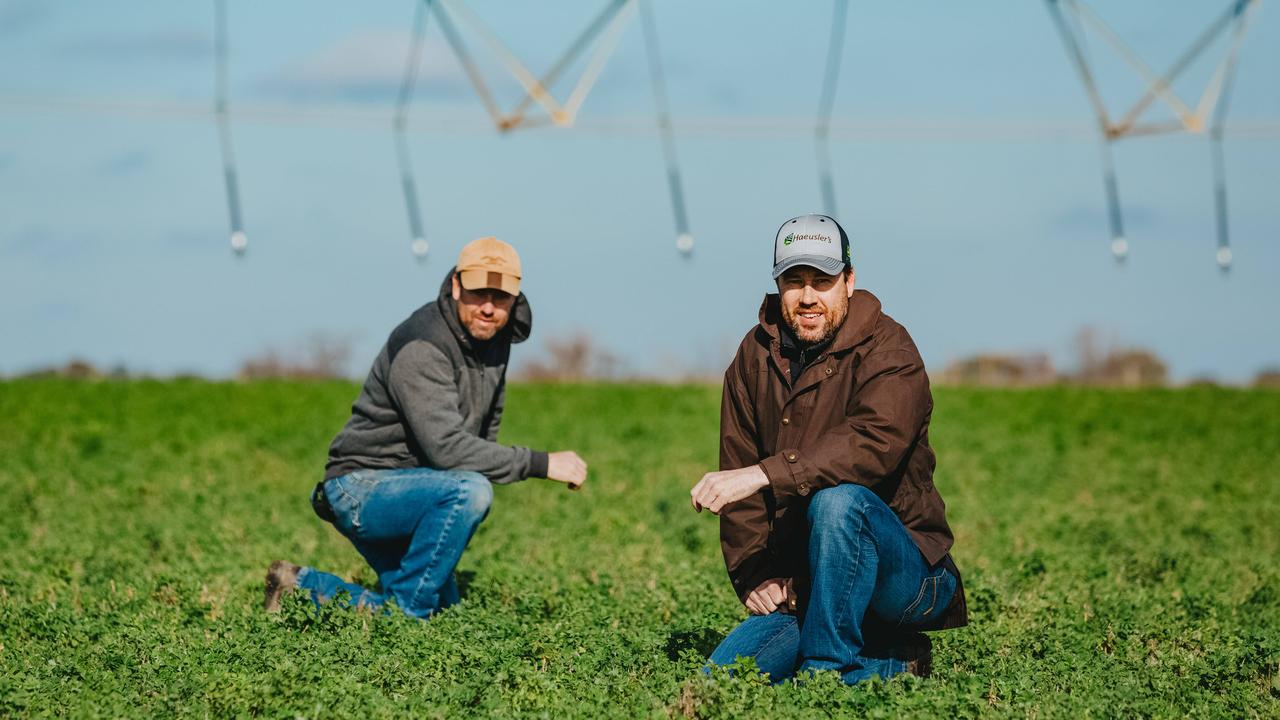Cuddle, feed and play with friendly alpacas at Redbank
With luxurious fleece and loveable personalities, these alpacas draw hundreds of visitors to the Pyrenees.
WHEN Debra and Andrew Borg realised their long-held dream of a tree-change to their own 16-hectare property five years ago, they thought they had achieved paradise.
Here, 200km northwest of Melbourne at Redbank, between Avoca and Stuart Mill in the Pyrenees region, they had solitude, a creek bordering their property, a natural box‐ironbark forest on their doorstep and hectares of room to roam.
After raising their two children in Melbourne and moving frequently for Andrew’s Air Force postings across the nation, it was time to do their own thing.
Yet quickly they realised there was still something missing — animals.
On the urgings of Debra’s mother, Dorothy, they chose four alpacas, because they thought they’d look good around the place. And they did.
Immediately Debra and Andrew fell so in love with their new companions with their “stunning fleece and gorgeous temperaments”, they wanted more.
And the more they gained, via purchases and on-farm breeding on their Blue Gum Rise property, the more other people became interested.
“People began asking if they could come and look at them,” Debra recalls, “and friends in Melbourne would do day trips out or come up and stay the night just to see our alpacas.”
Two years ago, when their alpaca herd topped 20 and the visits kept coming, Debra and Andrew set up Redbank Alpacas, a part-time agritourism business that gives people a chance to get up close and personal with these South American camelids.
They thought they might attract 75 visitors a year, yet people arrived in their hundreds. Last year 350 visited, mainly by appointment at weekends and school holidays, and numbers continue to grow.
The Borgs offer an alpaca experience, which includes feeding and patting the alpacas, as well as a longer 90-minute walking trek with the animals.
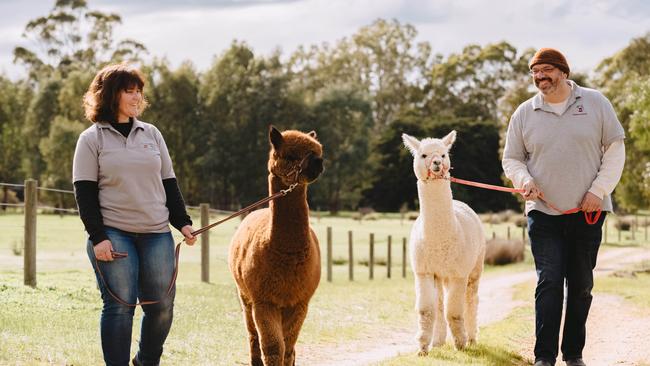
NOT FOR PROFIT
Redbank Alpacas is not a fantastically profitable business, yet Debra and Andrew don’t want it to be. At $20 a head entrance, which includes the cost of their Alpaca Experience, they figure their alpacas are paying their way nicely while providing them with a wonderful interest.
“It’s definitely a hobby business,” Debra assures. “The alpacas are paying for their own food, working for their daily bread, and their hay, if you like.”
Plus, Andrew adds, he and Debra have jobs during the week and don’t want their alpacas to become fed up with all the attention.
“We don’t have a profit motive but while the animals are paying for themselves we certainly enjoy seeing the smiles on people’s faces. We gain so many good memories from the groups that come through.”
Andrew works for the Department of Defence as a project manager while Debra is employed as a teaching assistant at a nearby school.
“When I went to resign five years ago to move here,” Andrew says, “they asked me whether I’d take the job home and telecommute. I still spend time down in Melbourne but most of the time I work from a home office up here.”
The alpacas are all halter trained, with their own names — Brandy, Kalista, Ruby, Rosa, Snowy, Jess, Rumble (a young male given to play fighting with others) and Flash (who once saved their cat from a fox).
When daughter Rebecca got married at the property earlier this year, the ceremony, appropriately, featured a pair of alpacas in the bridal party.
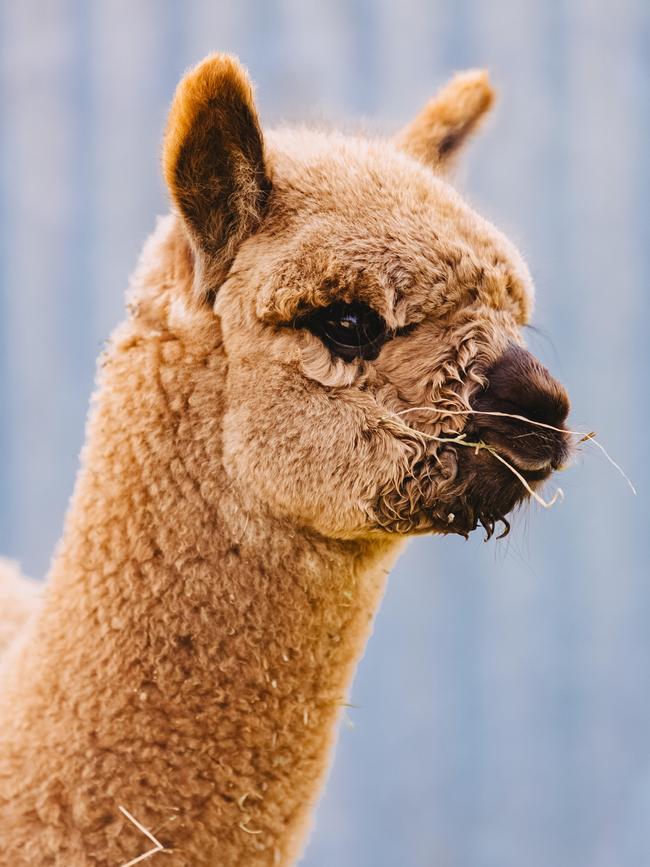
SCARS AND SPIT
The only anti-socials among the herd are Midori — “strong and like a barrel on legs” — and Blossom, both bought early and, because they came from big herds, not accustomed to human contact.
“Blossom is a big girl, yet despite having a lovely name she has a great kick that has put a couple of scars in my chin,” Andrew says.
Because females can occasionally be temperamental, it’s the more predictable wethers that are used for meeting visitors.
“And of course you’ve also got the spit,” Andrew says, laughing. “Some animals are more spitty than others, especially the mothers. If you go near their babies you tend to cop a wad of spit and it’s really not pleasant.”
Currently there are 25 alpacas. Debra and Andrew are adamant they will cap the herd at 30, selling any extra. The have already sold two pairs for use as herd guards on a nearby property.
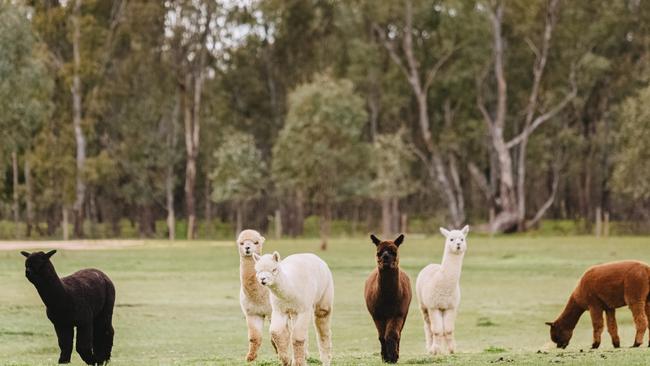
LEARNING CURVE
While their part-time business has become a popular tourist destination, often cross-promoting with wineries in the former goldmining region, they admit they are still on an alpaca learning curve. Both are on the council of the Australian Alpaca Association with which their animals are registered.
“We can trace their family trees right back to the ones that were imported from Peru,” Andrew says.
They have an impressive collection of awards, including a few blue ribbons from local shows.
“We have relied heavily on the alpaca industry for advice and it’s a great industry. Everyone is exceedingly open and friendly and happy to support,” he says.
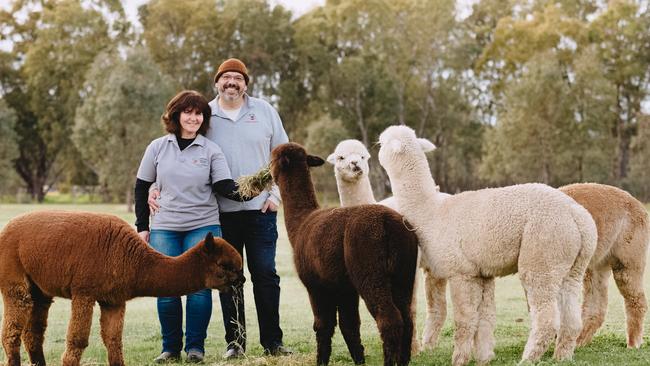
THE ROUTINE
Before the heat of summer, the alpacas are shorn. While Debra and Andrew are confident to administer an occasional light trim with electric clippers, they call in a professional shearer for the big job.
“He brings two special tables and you pop them up on a table and stretch their front and back legs out, while someone holds the head,” Debra says. “You shear one side and tip them over and shear the other side.
“The wool on the saddle is the best, so you get that off first and do the legs after. It’s a little more involved than sheep shearing.”
Debra sells some fleece to spinners, and some she cleans before sending it off to be turned into yarn, which her mother knits and crochets into beanies, ear muffs and occasionally scarfs for sale to visitors.
“So we can do a story of ‘here’s the animal in the paddock’, and ‘here’s a lovely beanie’.
“We also sell skeins so people can do their own knitting or crocheting.
“Because alpacas come in so many wonderful colours, you don’t have to dye the wool. You can offer natural coloured wool. A lot of people really like that, especially when you can point out the actual animal in the paddock it came from.”
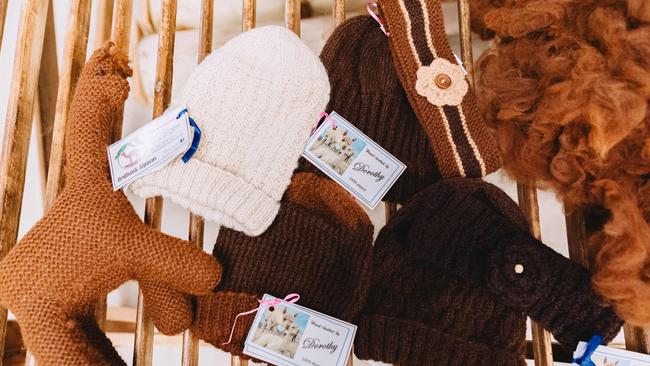
ANNUAL JABS
Each year the alpacas receive injections of vitamin D and a 5-in-1 injection to prevent tetanus, enterotoxaemia (pulpy kidney), black disease, malignant oedema and blackleg.
“Because our winters here are too cloudy for them and as they get their vitamin D from the sun, they need topping up,” Andrew says. “If they don’t get that vitamin D, their bodies start drawing the calcium and phosphorus from their bones and they end up with rickets.”
Despite the success of Redbank Alpacas, expansion is unlikely.
“We can’t go bigger in any other direction and, because we like it here too much to move, this’ll be it — unless we win the lottery. Or find a gold nugget,” Andrew says. “But we’re pretty content with what we’ve got … we’re certainly enjoying it.”
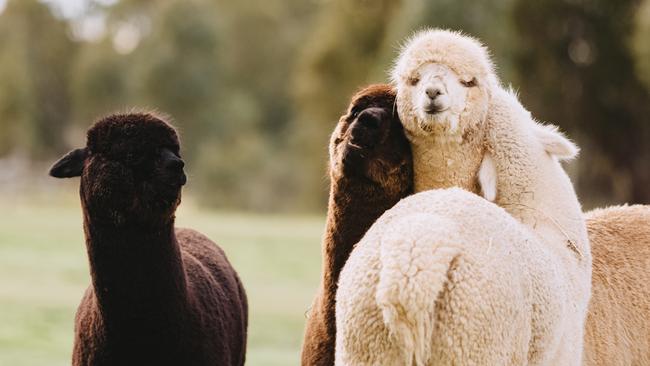
FARM FILE: Redbank Alpacas
Debra and Andrew Borg run Redbank Alpacas, a part-time tourism venture that allows visitors to observe, pat, feed and walk alpacas, on their 16-hectare property Blue Gum Rise at Redbank, 200km northwest of Melbourne. In addition to educational tours, they sell alpaca wool beanies for $40 and 100g skeins of alpaca wool for $22.
Where: Redbank, Victoria
More info: alpacatrek.com.au

